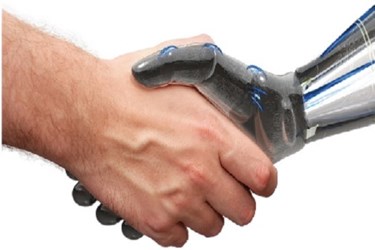The Robot Will Assist You Now

By Christine Kern, contributing writer

It is estimated that surgical robotics sales will reach $6.4 billion by 2020.
It seems like something out of a Star Trek episode when surgeons can rely on surgical robotics to treat patients. And while robotic surgery is still in its infancy, its potential is immense. The sophistication of controls and multiple degrees of freedom provided by various robotic models allow for increased mobility and no tremor without compromising the visual field, allowing for intricate and complex operations to be performed safely and successfully.
By 2020, surgical robotics sales are expected to almost double to $6.4 billion according to a recent report by Allied Market Research, marking a 10.2 percent annual growth rate between 2014 and 2020.
According to Allied, the surgical robotic systems and procedures market is being driven by the increasing need for automation in healthcare and growing demand for minimally invasive surgeries, as well as a rise in cases of colorectal cancer, neurological disorders and gynecological diseases, among others, that would boost the adoption of robotic surgical systems well adapted for minimally invasive procedures.
“Surgical robotic systems offer less post-surgical complications and reduce labor cost,” the study found. “Due to this, large-scale hospitals based in developed and developing economies are now favoring automated surgical/hospital services, which ultimately drives the market growth.”
One such robotic system, the da Vinci Surgical System, was approved by The Food and Drug Administration in 2000. Since that time, the da Vinci has been adopted by hospitals in the United States and Europe to treat a range of conditions. The system's console provides a high-definition, magnified 3D view of the surgical site. Another robotic system, The Flex System, is the first robot-assisted flexible endoscopic platform of its kind and the first to receive FDA approval with the word robot in its name, according Howie Choset, a professor of robotics at Carnegie Mellon University's (CMU) Robotics Institute, where it was invented.
“I see these robots as tools,” Choset said. “As those tools get better and better, you don't need as much specialization to do a task. Some procedures today [such as colonoscopies] we might call routine procedures and they are being done by non-surgeons, so surgeons are freed up to do more complicated tasks. I also do see robots being able to provide more feedback and visualization so physicians can make more informed decisions.”
Choset says robots won’t be making medical decisions, but they do have the potential to improve accuracy during minimally invasive operations, damage less tissue and reduce the possibility of infection, and thus ultimately decrease costs from patient readmissions.
Since the Affordable Care Act of 2010 created both the Hospital Readmissions Reduction Program and a new pay-for-performance system based on quality of care — not the number of procedures — robots could end up paying for themselves.
